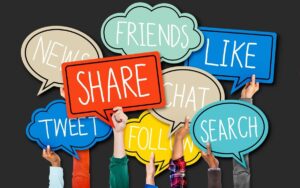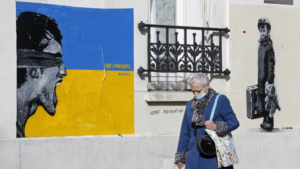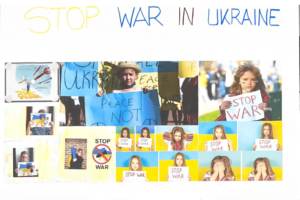“How to be a responsible user of the social media”

Social media are a great way to communicate with a global community. However, it can also be a tool that people use to spread misinformation and fake news. The world is becoming more interconnected and we must be responsible for the information we share. Social media have become a global platform that allows people from all over the world to connect and find common ground. It is a great tool to share information, but it must be a tool that we use carefully and with empathy. Social media networks facilitate the spread of information and ideas across vast distances. This openness may allow for positive changes to occur, but it also increases the chance of negative effects. The spread of false information and the spread of real threats may be at an all time high.
When I see a social media post that I disagree with, or someone I follow shares a post that I find offensive or distasteful, I unfollow them. My choices on how to use social media are shaped by my ethics and values. Some general responsibilities that social media users should keep in mind include being aware of the potential for their posts to be spread widely, being respectful of other users and their opinions, and using caution when sharing personal information. Additionally, social media users should be aware of the ways in which social media can be used to manipulate public opinion, and should be critical of any information they see online.
Social media has totally reformed our reality. It’s hard to believe that Facebook has been around for less than 20 years and has been open to everybody for even less time than that. After the introduction of Facebook, it began a snowball effect of social media platforms. From Instagram to snapchat and from LinkedIn to Alienable, social media sites are all over the place and fill pretty much all needs imaginable with regards to associating people. Websites and programs that emphasize on communication, community-based input, engagement, content-sharing, and collaboration are referred to as social media. Among the various sorts of social media include forums, micro blogging, social networking, social bookmarking, social curating, and websites.
Individuals can use social media to stay in touch with friends and family. Some individuals use social media to network and locate employment opportunities, connect with people all over the world who share similar interests, and express their own ideas, feelings, and insights. And because so many people are currently using social media, it is unavoidable that it will be misused. However, there are five methods in which we can utilize the media freely and without causing harm to others.
And because so many people are currently using social media, it is unavoidable that it will be misused. However, there are five methods in which we can utilize the media freely and without causing harm to others.
1. Safety- All of our personal information that we put on social media may easily be exploited against us by others. Because the media has such a broad reach, it may be harmful to users if they are not careful while posting information on the platforms they use. Always keep in mind that personal information must be kept safe, and that you must guard it as well as other people’s personal information to avoid falling victim to impersonators.
2. Prior to posting anything on the web, remember the T.H.I.N.K. abbreviation and guarantee that what you need to post will profit you and the individuals who see it.
T represents True – Is this post/picture/comment honest or is it perhaps dependent on gossip?
H is for Helpful – Will this assist somebody or will it possibly carry negativity or hurt somebody?
I is Information – Is this genuine information based on truth or is it tattle or superfluous gab?
N is for Needed – Is this something that individuals need to hear or it is irrelevant?
K represents Kind – Is what you need to post kind and decent, or is it brutal or discourteous?
3. Be Respectful- Respect for all social media users is essential for efficient operation of the platform and the avoidance of misunderstandings among its users. Different sorts of views and actions may be seen in the media since it is a place where many people engage. There will be those who disagree with your post and those who agree with it. Nonetheless, we must show respect for one another and refrain from arguing in a way that might lead to online bullying.
4. Credits- Everything in the media comes from the ideas of a variety of people of various ages. Giving acknowledgment to the creator of the material you just shared qualifies you as a responsible user. Any act of claiming the work of others is considered disrespectful and can result in legal action. After all, who wants their efforts taken away without any credit?
5. Create- The media is designed to appeal to a wide range of people. You may make anything you want here and share it with others. Because of the creativity and innovation they come up with and share with people who read their postings, all social media users are creators. We can do a lot with the media if we utilize it as a tool to promote goodwill and solidarity. As a responsible creator, you must ensure that your work is beneficial, inspirational, and encouraging to others. Let’s start by setting a positive example as a responsible social media creator and user.
I am very much concerned with my own privacy, as much as with that of others. I never send unsolicited requests to any user, nor do I accept such requests, unless I know the other person well. I always post relevant and good quality stuff on social media and never cross the line of decency by posting obscene, objectionable or potentially vile articles, pictures etc. While using social media channels like twitter, it is possible that I may disagree with someone’s opinion, but I always maintain the decency of language and content. I never forward a post unless I am sure about the authenticity of the stuff. It helps me check the spread of fake news and false narratives. I refrain from forwarding even the genuine stuff, when I find it potentially harmful for the society. I believe in originality of content and don’t pass on others’ work as mine.
References
Latip-Yusoph, S. (2016). Language Trends in Social Media: Manifestations of Meranaws’ Use of English on Facebook.
Brown, H. (2016). Does globalization drive interest group strategy? A cross‐national study of outside lobbying and social media. Journal of Public Affairs, 16(3), 294-302.
 Fresco murals by French street artists Kelu Abstract and Jeff Aerosol are displayed on the wall of a Parisian building on March 14, 2022 in Paris, France.
Fresco murals by French street artists Kelu Abstract and Jeff Aerosol are displayed on the wall of a Parisian building on March 14, 2022 in Paris, France.







Recent Comments